Printing Presses, Empowered by 3D Printing: Robotics Applications and Replacement Parts at HEIDELBERG
Heidelberger Druckmaschinen AG is the leading global manufacturer of offset printing presses, operating in over 170 countries with close to 10,000 employees worldwide. The company produces a wide range of tools and automation solutions for the entire printing value chain, from some of the largest and fastest state-of-the-art printing presses to cutting and folding machines.
Around six years ago, HEIDELBERG added a new dimension to their workflows: 3D printing. Initially, they introduced the technology to optimize prototyping and product development by cutting costs and lead time. But today, the company uses 3D printed parts in series production, producing thousands of parts per year for around 15 different applications.
Read on to learn how selective laser sintering (SLS) 3D printed parts empower lightweight robotics applications and can even replace steel parts in folding machines.
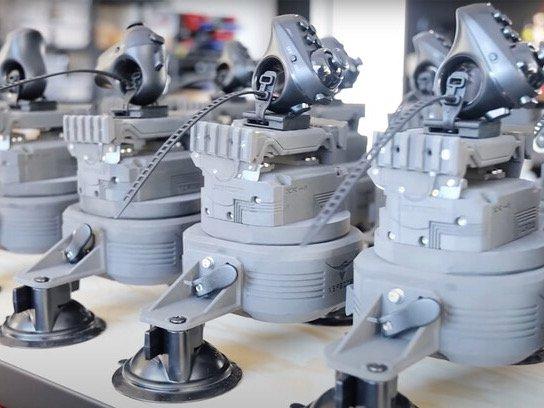
Stress Testing 3D Printed Parts for End-Use Applications
This white paper presents Formlabs 3D printing hardware and material solutions for end-use part production. It documents various users' case studies and includes stress testing results to verify the suitability of 3D printing materials for end-use applications.
Speeding Up Product Development
“HEIDELBERG comes to us with projects related to new developments, especially when it comes to the development of components and assemblies that go beyond conventional production,” said Joachim Krumma.
After working for 15 years at HEIDELBERG in product and application development, Krumma now runs CTS-3 GmbH, a technology consultancy in the field of additive manufacturing. They work closely with HEIDELBERG’s research and development team and provide support in product development as well as transferring new applications to series production.
Some of this development takes place in the field, where HEIDELBERG’s product can be directly tested and refined with real-time input from the end customers.
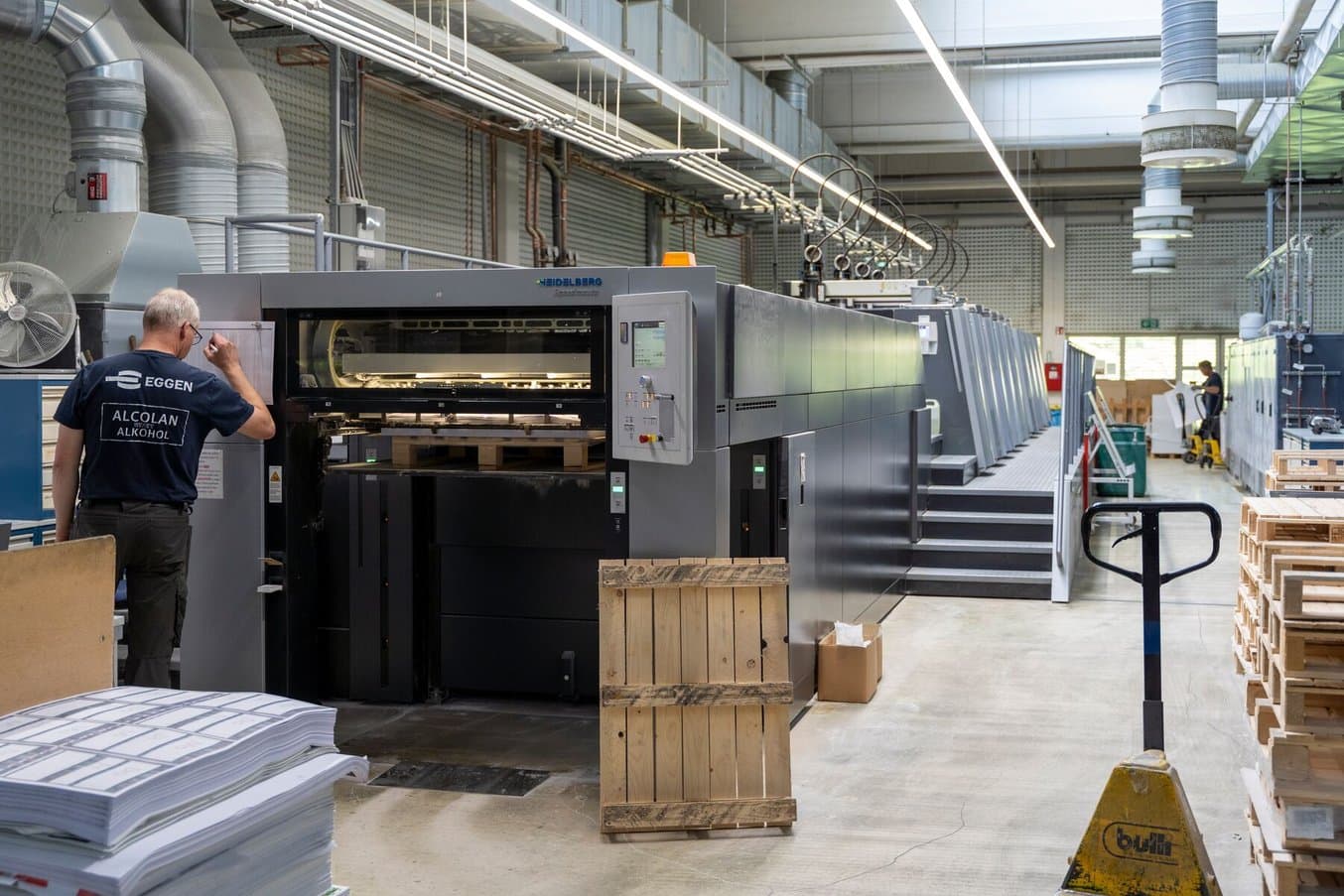
Meinders & Elstermann is a large offset printing company in Belm.
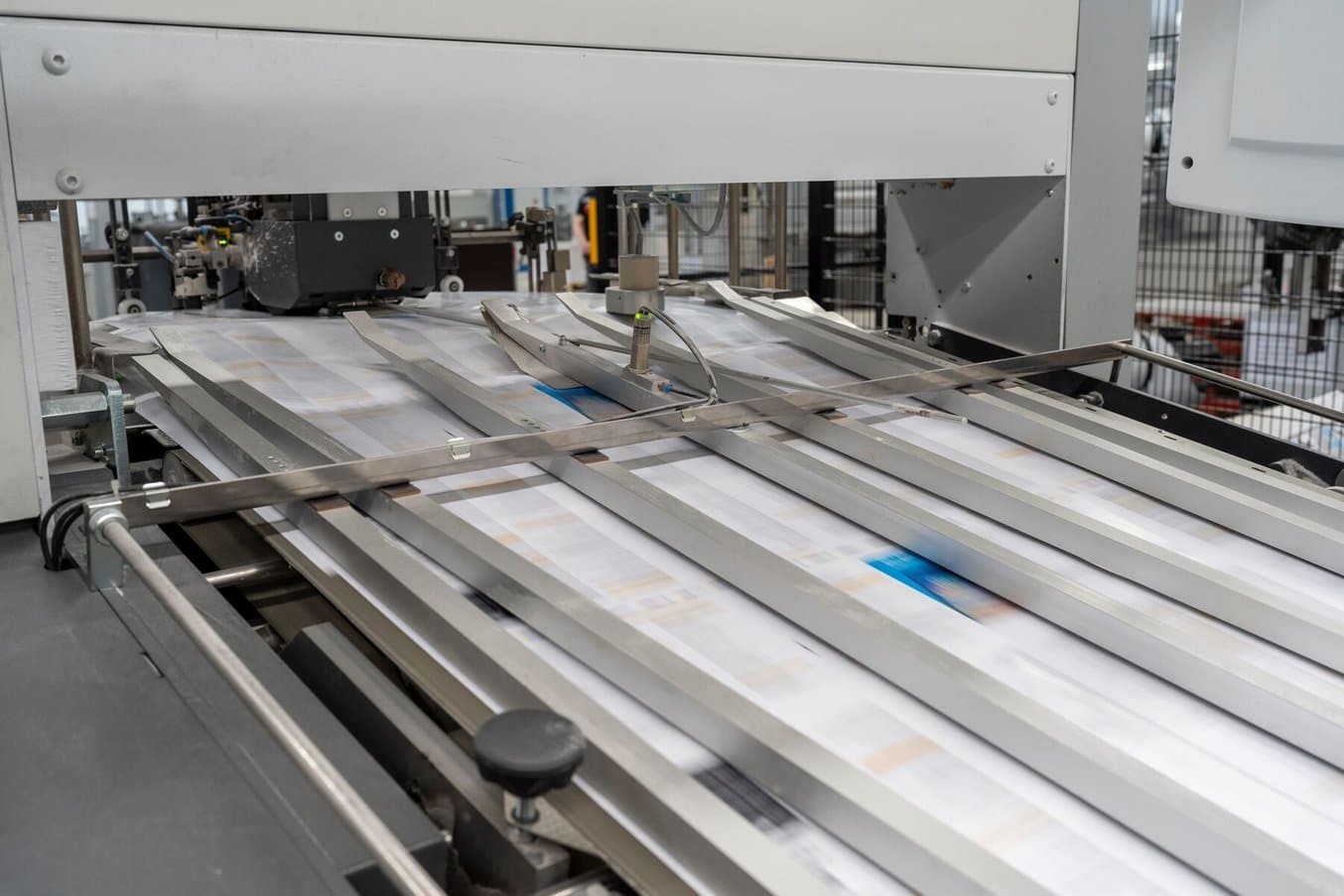
New HEIDELBERG products are tested and developed further at their site.
“Meinders & Elstermann is a large offset printing company in Belm. We print about 100 to 120 million sheets of paper every year. We have four HEIDELBERG printing machines in the print shop and seven folding machines in the print finishing department. The machines that HEIDELBERG wants to launch on the market are tested by us and they’re going through continuous development at our site,” said Klaus Harig, the Head of Processing Department at Meinders & Elstermann GmbH & Co. KG.
3D printed parts are used for a wide range of applications: lightweight parts for pick-and-place robots, new components for folding machines, and replacement parts for machine components previously manufactured in steel. To produce them, the team relies on a Fuse Series SLS 3D printer and Nylon 12 Powder for rigid parts or TPU 90A Powder for flexible parts.

HEIDELBERG uses 3D printed parts for a wide range of applications, including lightweight parts for robots and replacements for machine components previously manufactured in steel.
“The most essential point for us is the speed of 3D printing. We have a swift response time to customer requirements, which are constantly changing. We can develop and produce new parts within one or two days, whereas it used to take us several weeks in some cases. That's why 3D printing is perfect for us.”
Joachim Krumma, Management, CTS-3 GmbH
Besides cutting lead times, cost savings are also enormous. This is especially true in the field of prototyping, but also in series production of custom and low-volume end-use parts. “We're often looking at a 10x or 20x cost reduction compared to normal production when we manufacture parts,” said Krumma.
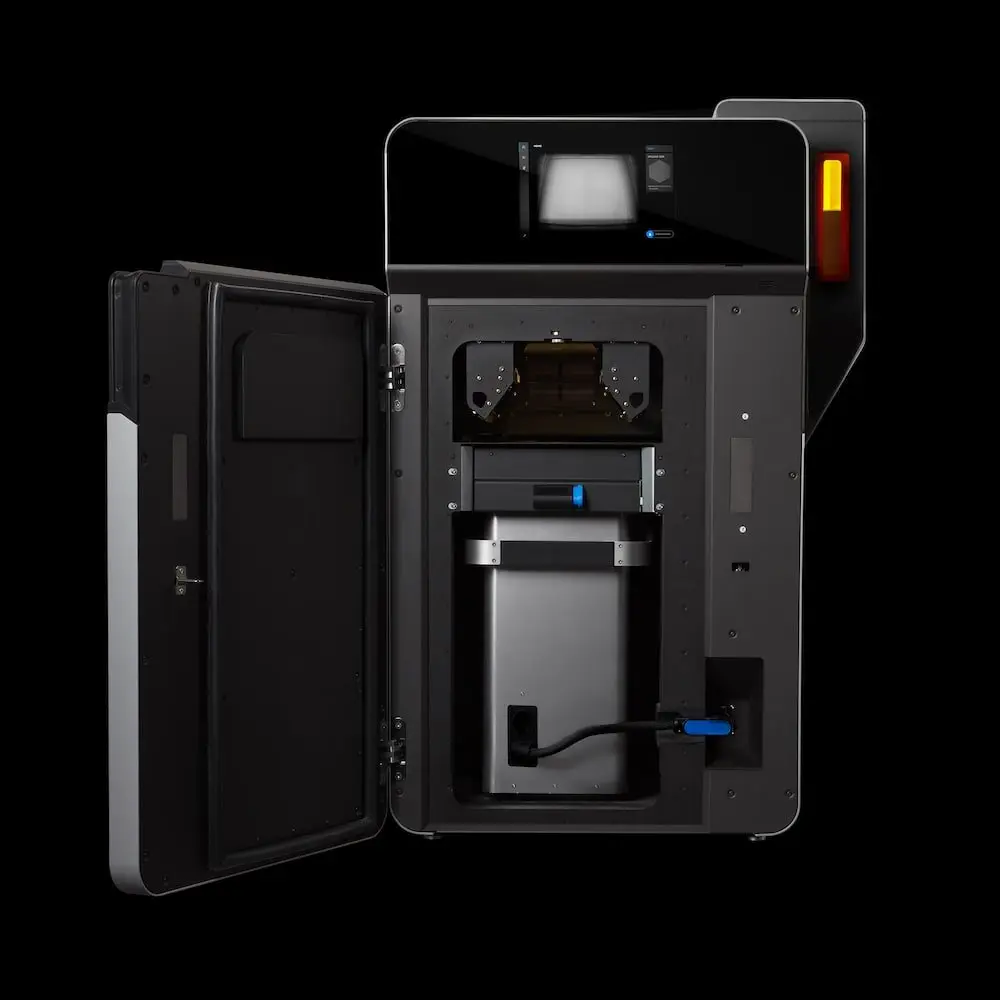
Rapid SLS Production of High Performance Parts with the New Fuse 1+ 30W
Watch our product demo for a walkthrough of the Fuse 1+ 30W and SLS 3D printing with Formlabs experts.
Lightweight Parts for Robotics
The title of the machine with the most 3D printed components goes to the P-Stacker, a state-of-the-art pick-and-place robot system that takes folded sheets in a bundle from the folding machine and positions them on a pallet.
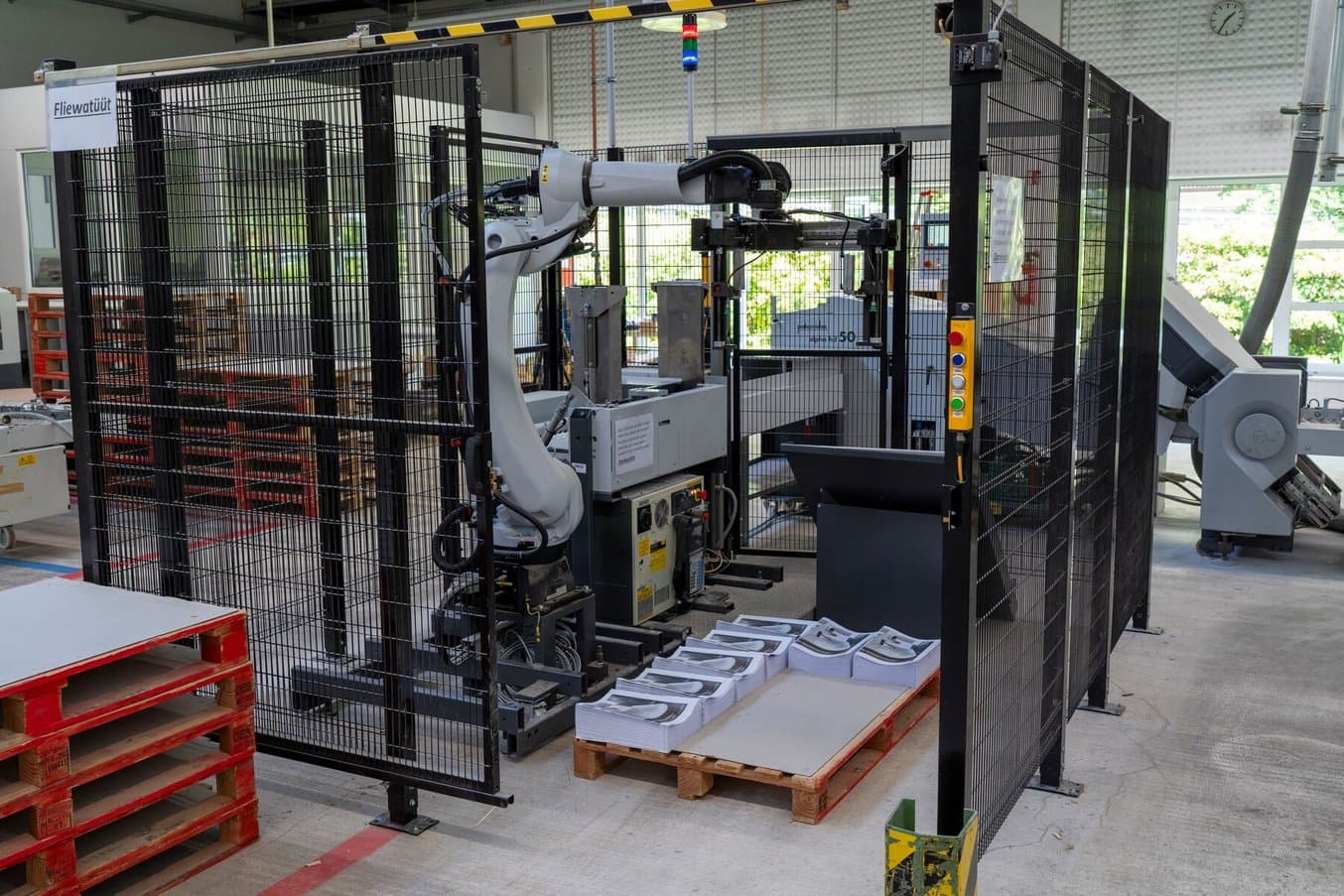
The P-Stacker takes over the strenuous task of stacking signature packages behind the folding machine, reducing the operator’s workload.
“The robot can stack the pallets up to one meter high. Depending on how fast it is running, it can place up to 18,000 sheets per hour. Before we started using the P-Stacker, one person had to move four to six tons of packages on pallets every day,” said Harig.
Many of the 3D printed parts in this robot are highly complex and perform different functions simultaneously, such as universal joints and brackets responsible for axis movement, axis clamping, pneumatic suction, sensor technology, and sliding properties.
“Weight plays an essential role, especially in robotics applications. The more weight we have, the more mechanical stress the parts are subjected to, which affects the fatigue strength of the parts. We have a fairly high component density in the system, which means that we have little space left for large assemblies and parts,” said Krumma.
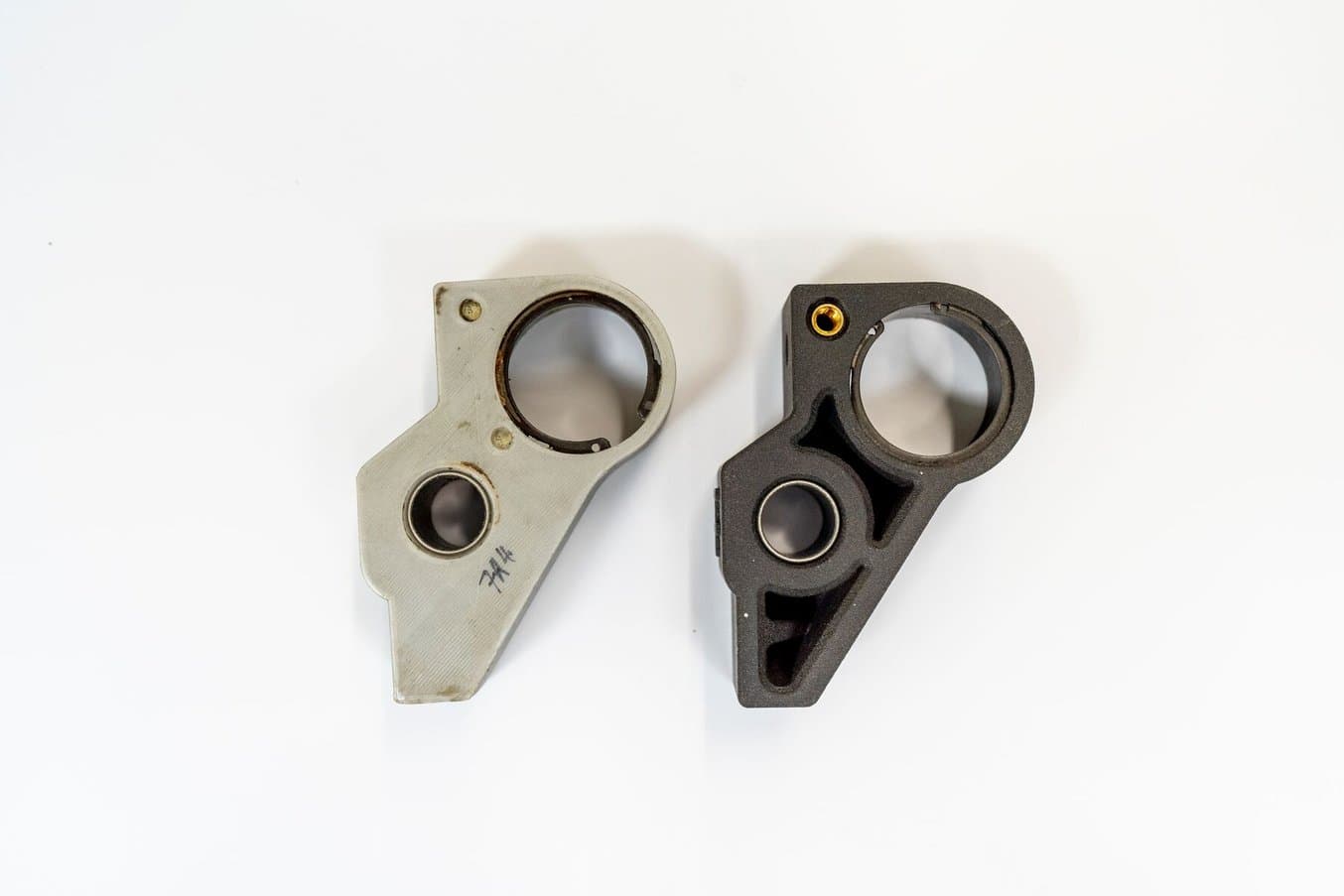
Plastic 3D printed parts are lighter than steel, and the designs can be further optimized based on the stresses and forces they are subject to. The increased design complexity doesn’t incur higher costs, unlike with traditional manufacturing tools like machining.
This often results in very complex, amorphous structures, as they are developed specifically for the application based on the stresses and forces they are subject to — which can be very high because they are in continuous use. The 3D printed parts are also often combined with other components, like metal bearings or Teflon-coated components, that offer anti-friction properties.
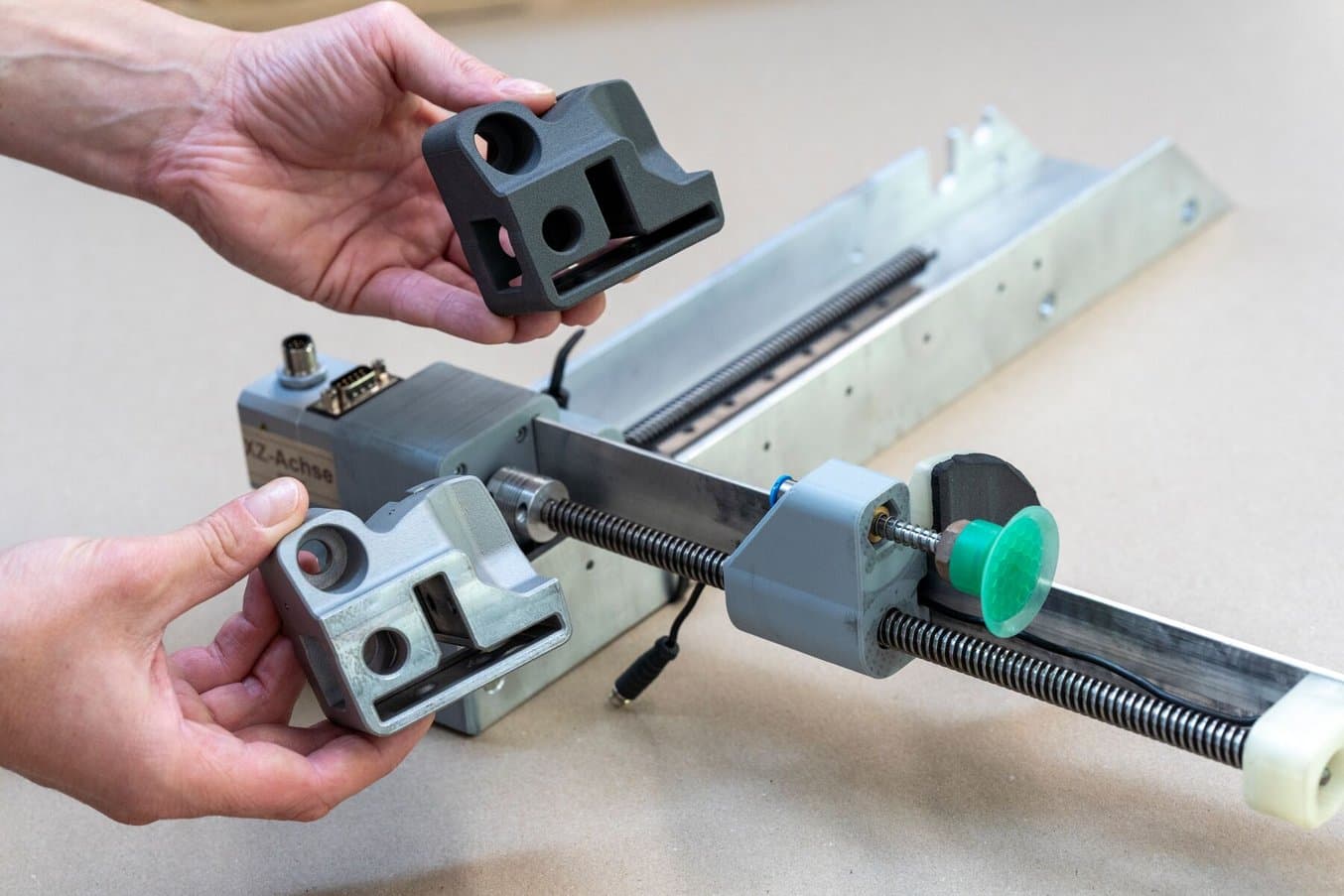
Many 3D printed parts in the robot are highly complex and perform different functions. Strong and durable components are produced with Nylon 12 Powder.
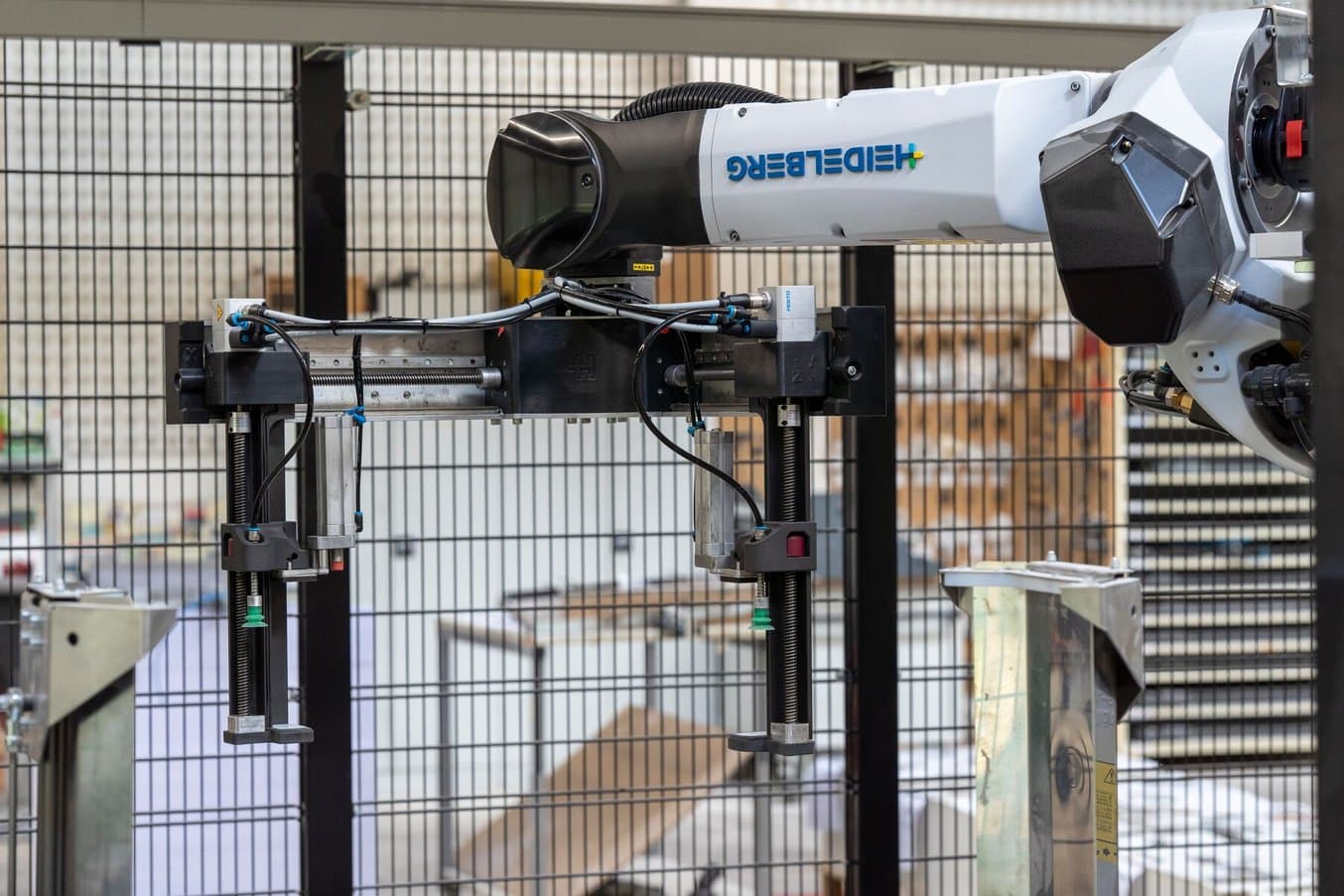
Weight plays an essential role in robotics, as it increases the mechanical stress the parts are subjected to.
Many of these complex shapes would not be cost-effective or even possible to manufacture with traditional tools like machining. Some parts would consist of different assemblies and components, and these would have to be laboriously assembled, aligned, and reworked. They would be much heavier and they would make the component density even higher.
“If it were possible to manufacture various parts conventionally, the effort involved would be enormous in contrast to 3D printing. SLS printing allows us to reproduce quite complex shapes, simplifying components and assemblies as we can develop and print some very amorphous geometries. It's perfect for us here.”
Joachim Krumma, Management, CTS-3 GmbH
Some parts are less complex, but still require high accuracy or delicacy. These can include flexible parts that prevent contamination, shield sharp edges, protect sensors, or prevent wear.
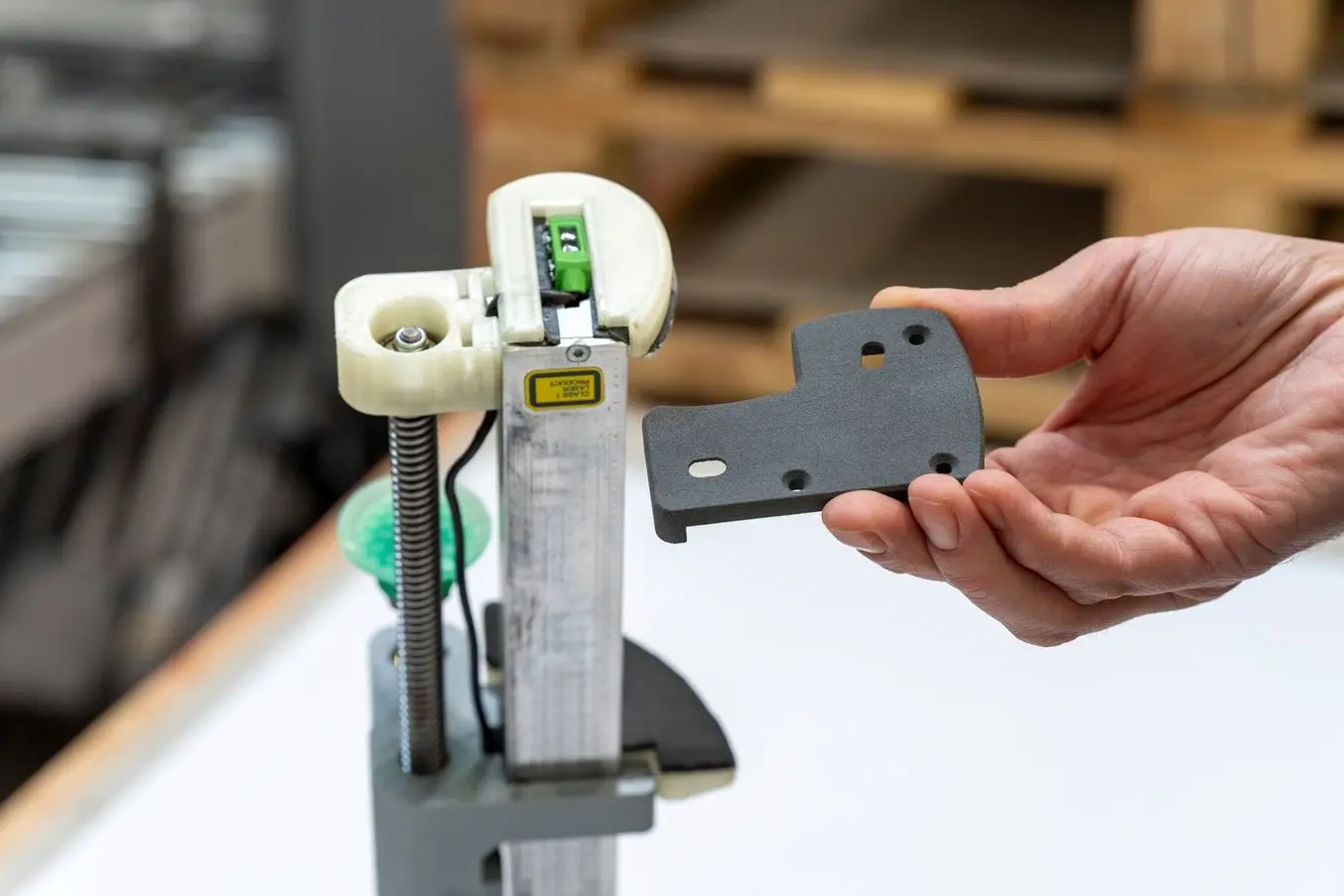
A flexible part printed in TPU 90A Powder to protect sensors and other end-of-arm tooling.

Flexible parts are ideal for snap-fit components. By shielding sharp edges, they also protect operators.
“A 3D printed part has recently been installed in our robot, which can prevent cable breakage and should therefore naturally increase its longevity. This way we can ensure that we don't have a day of downtime where the cable harnesses have to be replaced,” said Harig.
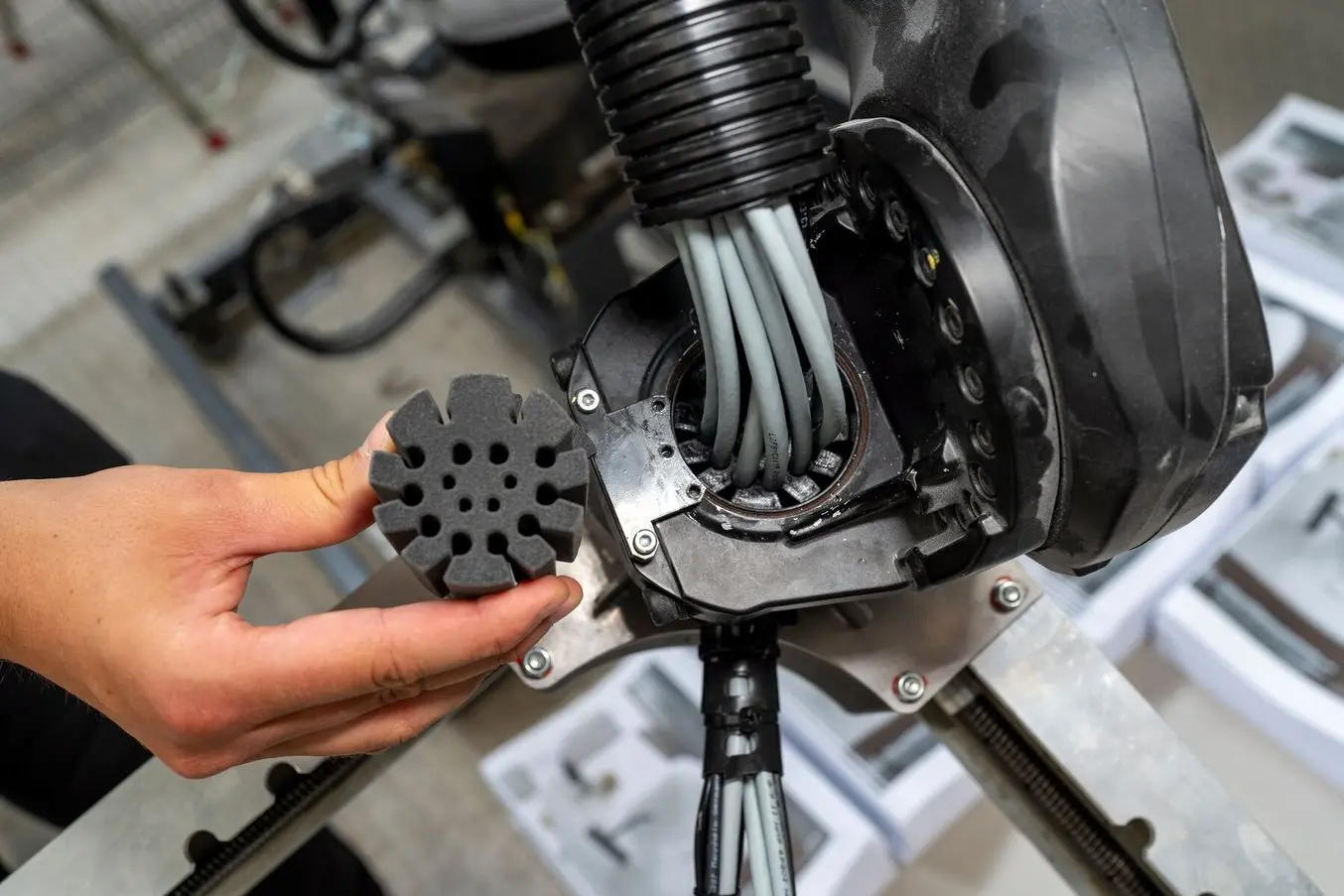
This flexible cable guide produced with a Fuse Series SLS 3D printer enables a complex design and offers a long-term durable solution for protecting the cables from wear.
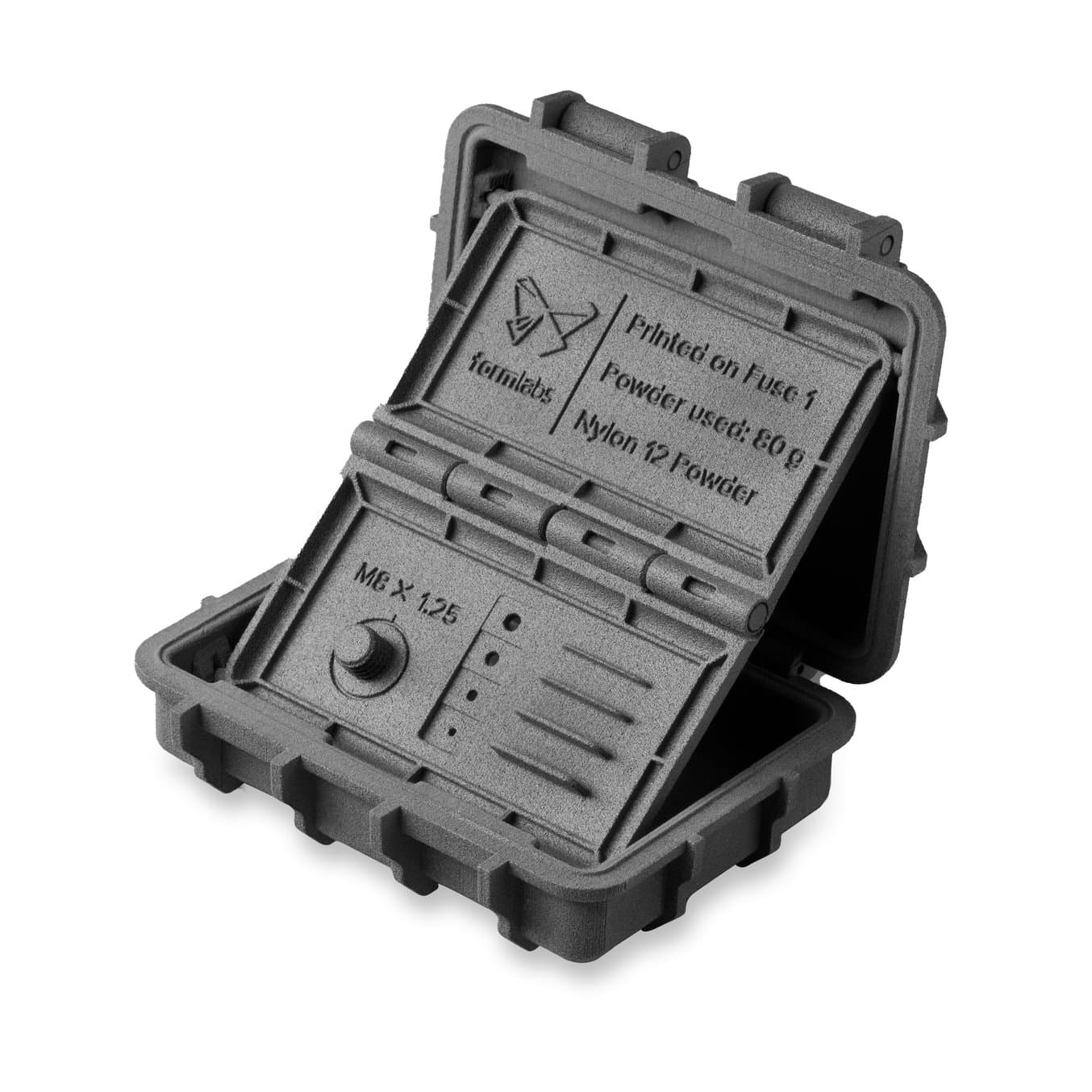
Request a Free Sample Part
See and feel Formlabs quality firsthand. We’ll ship a free SLS sample part printed on the Fuse 1+ 30W to your office.
Replacement Parts That Stand in for Steel
Avoiding and reducing machine downtime is essential in the printing business — any delay can lead to missed deliveries and render the printed material out of date. HEIDELBERG’s extensive service network can ship 95% of replacement parts to any destination worldwide within 24 hours, but the team was curious to test if on-demand 3D printed replacement parts could offer a solution for discontinued parts.
In one of Meinders & Elstermann's older folding machines, Krumma installed 3D printed parts to replace a variety of components originally machined out of steel, such as joints that hold metal rollers weighing up to 13 kg. The parts are under the hood of the machine, exposed to an excessively dirty and greasy environment. They are subject to heavy mechanical and physical stress over extended use, including during emergency stops when the entire machine grinds to a halt in a split second.
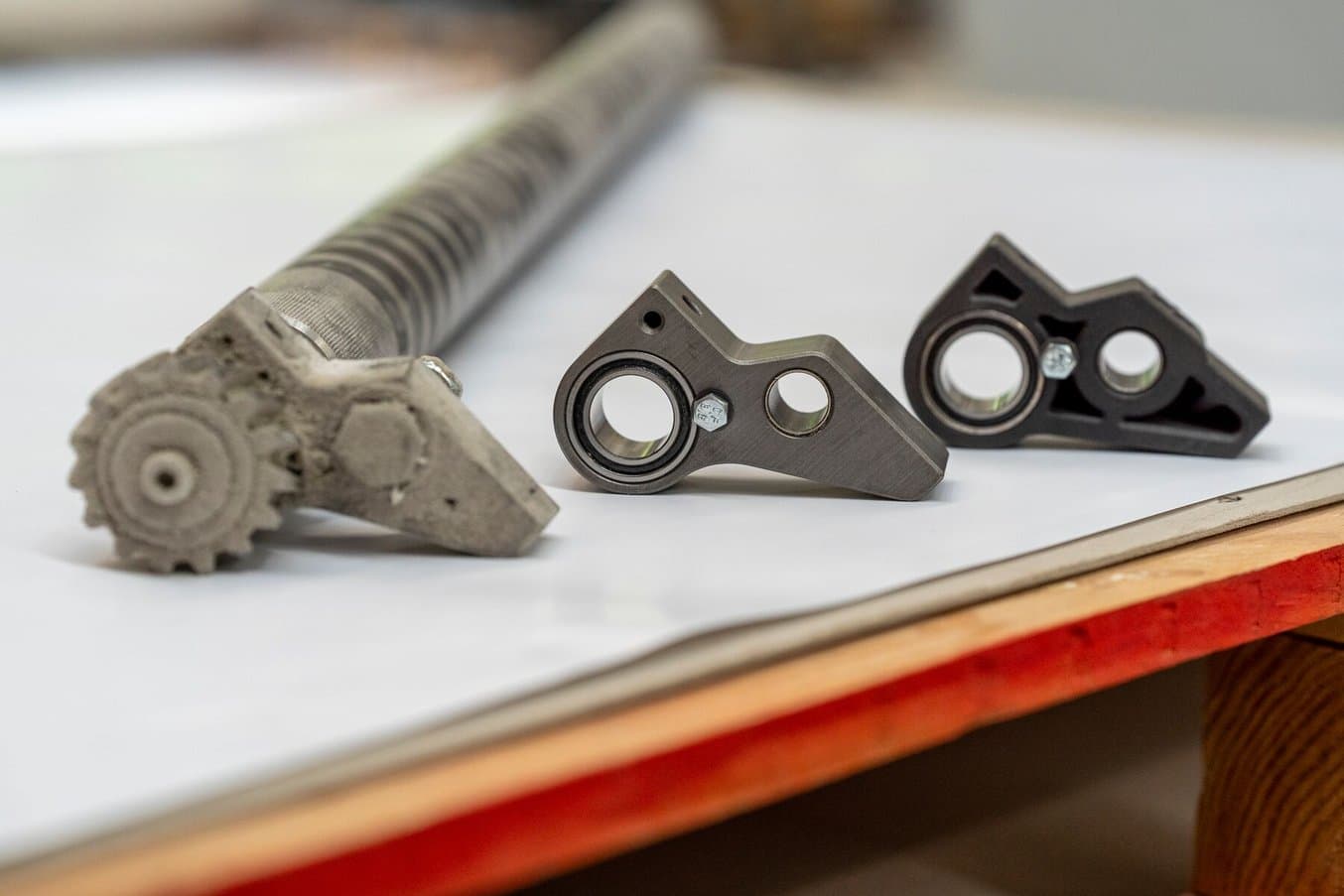
The 3D printed replacement parts are assembled with bearings and anti-friction metal components.
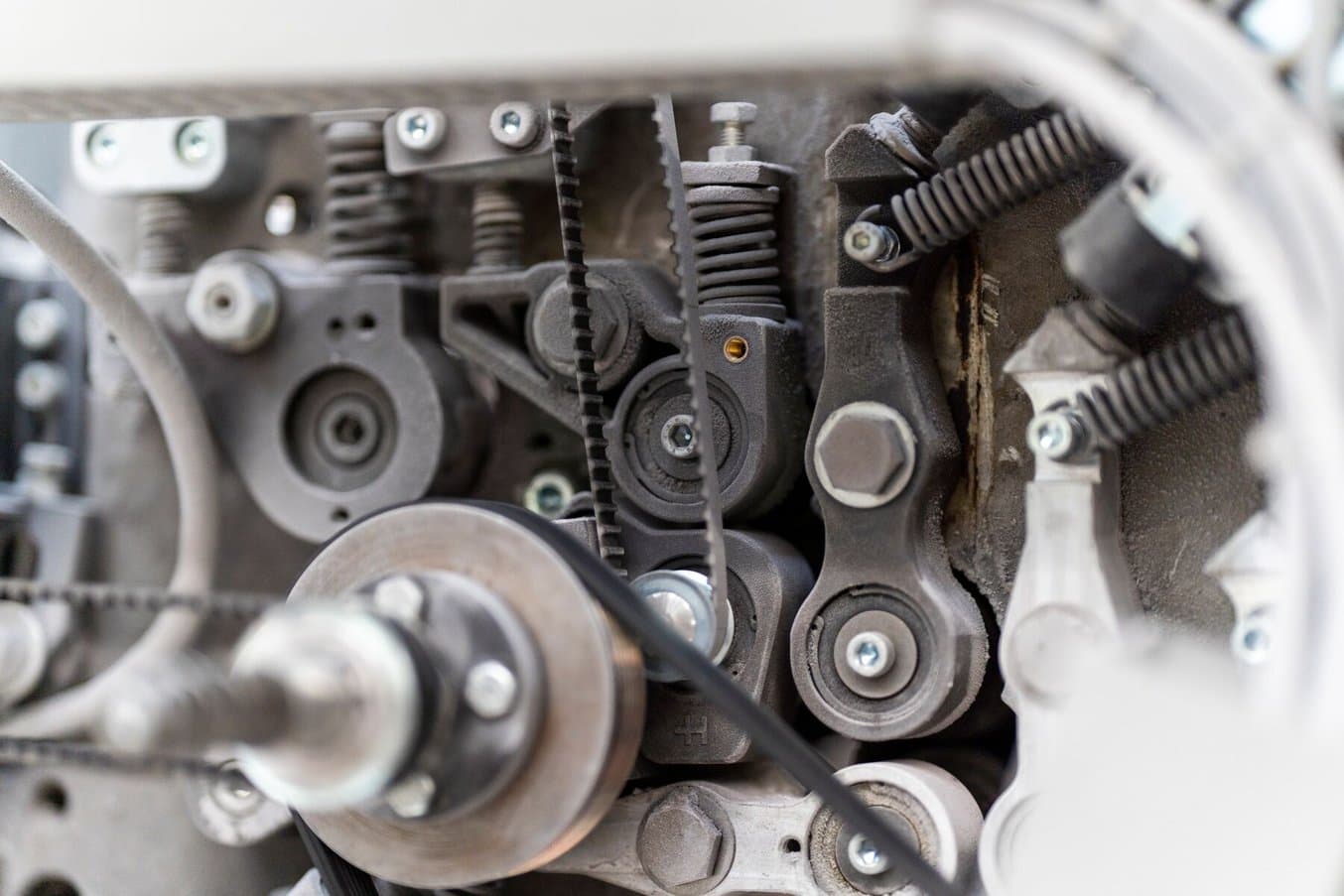
The joints hold metal rollers that rotate at high speed and weigh up to 13 kg each.
“They have to withstand continuous stress, i.e. two shifts, five days a week under extremely high loads. We currently have these parts installed that have been in machines for over two and a half years. This was not planned in the initial development stage. However, we had these parts under constant observation and it became clear quite early on that they could withstand the continuous load.”
Joachim Krumma, Management, CTS-3 GmbH
“I have to say that they are clearly very durable. I didn't believe that either, but we haven't had to replace any parts in our folding machines yet,” added Harig.
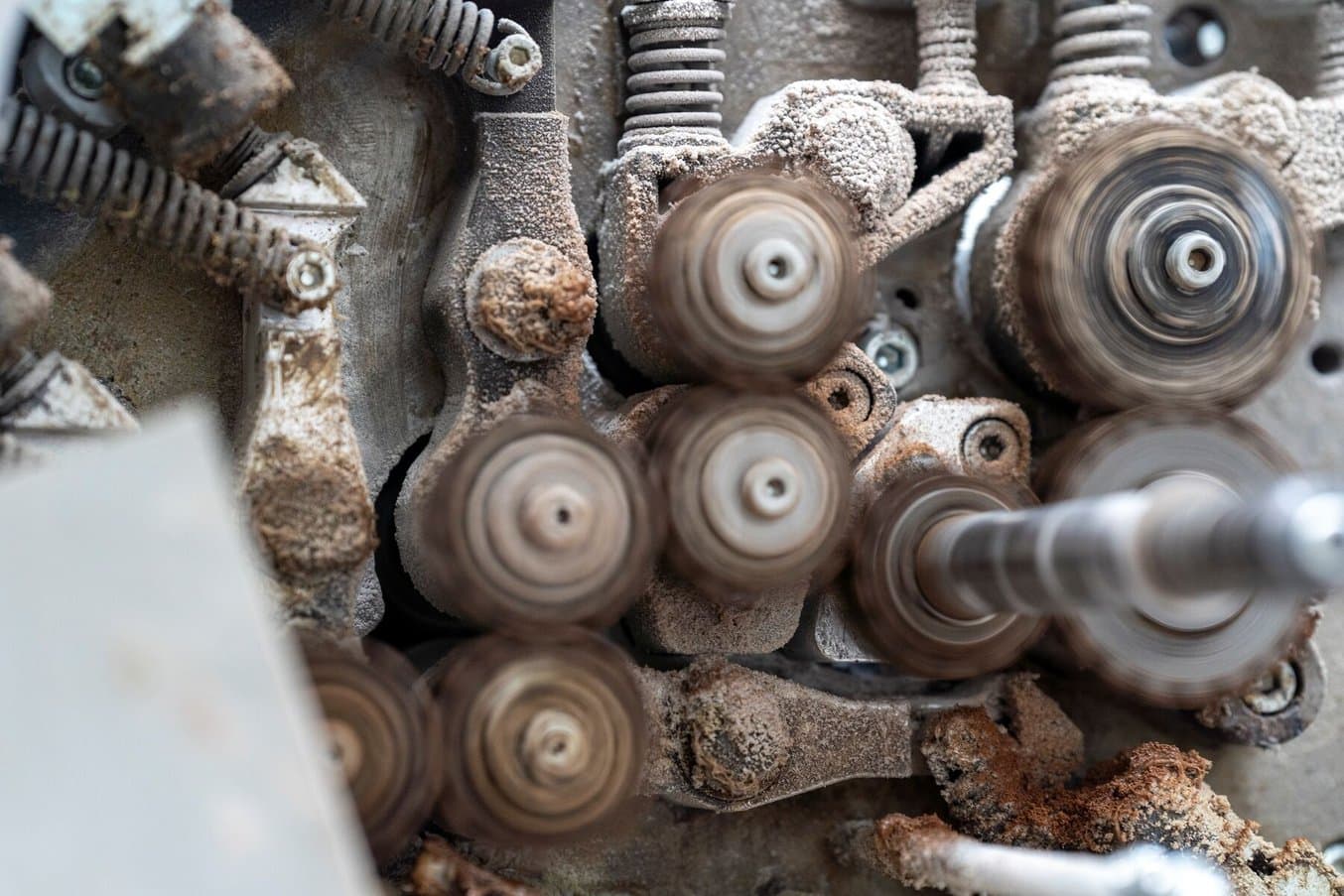
Some of the 3D printed replacement parts have been installed in a folding machine for two and a half years, running two shifts, five days a week, and exposed to an excessively dirty and greasy environment.
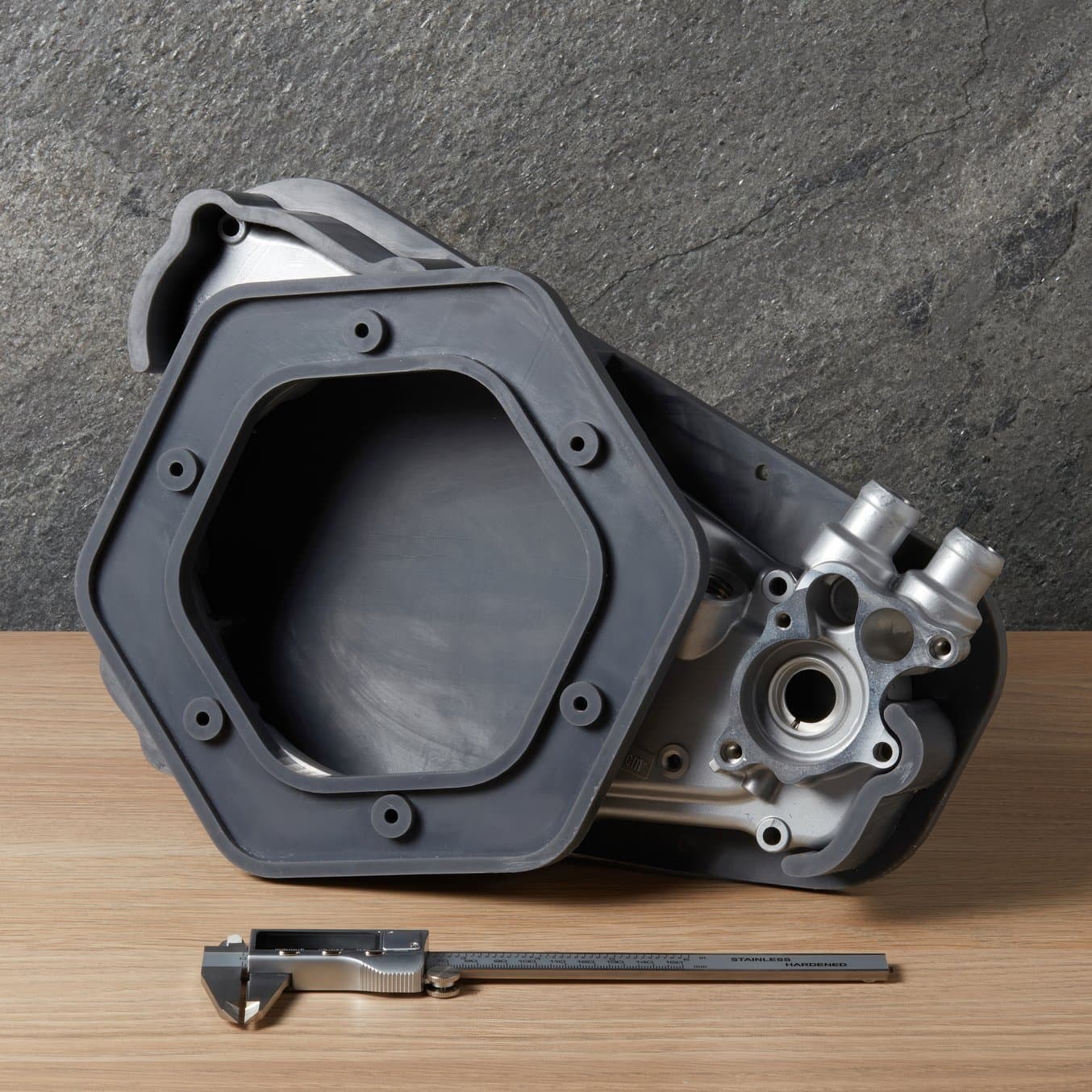
How to 3D Print In-House Jigs, Fixtures, and Other Manufacturing Aids
This white paper outlines the principles behind creating effective jigs, fixtures, and other manufacturing aids in-house.
Helping Printing Stay Competitive
“Many customers are opting for online rather than print products. As a result, many orders that we used to have are no longer there. Print runs are getting shorter and have to be available more quickly. And the only way to counteract this is with new machines. There will be fewer print shops in the future. Those who remain will have to make sure they're well-positioned for the future,” said Harig.
Leveraging 3D printers and working with experts like Krumma and CTS-3 empowers HEIDELBERG to speed up product development, which in turn enables their end customers to stay competitive in a rapidly changing market.
“If we didn’t have access to this technology, especially SLS 3D printing with the Fuse Series, then the development processes would be enormously protracted. The machines allow us to achieve very large development steps in a very short time. We can test and reject or further develop ideas, and produce parts overnight to test at the customer's premises the next day. Without this access, the development process would be almost like conventional manufacturing.”
Joachim Krumma, Management, CTS-3 GmbH
“3D printing is making huge leaps every year. You can see that those who stand still are left behind. We have now reached the point quite quickly where the 3D printing process has definitely paid off compared to conventional production. It's exciting to see what's coming and what's yet to come. And we are looking forward to it,” said Krumma.


